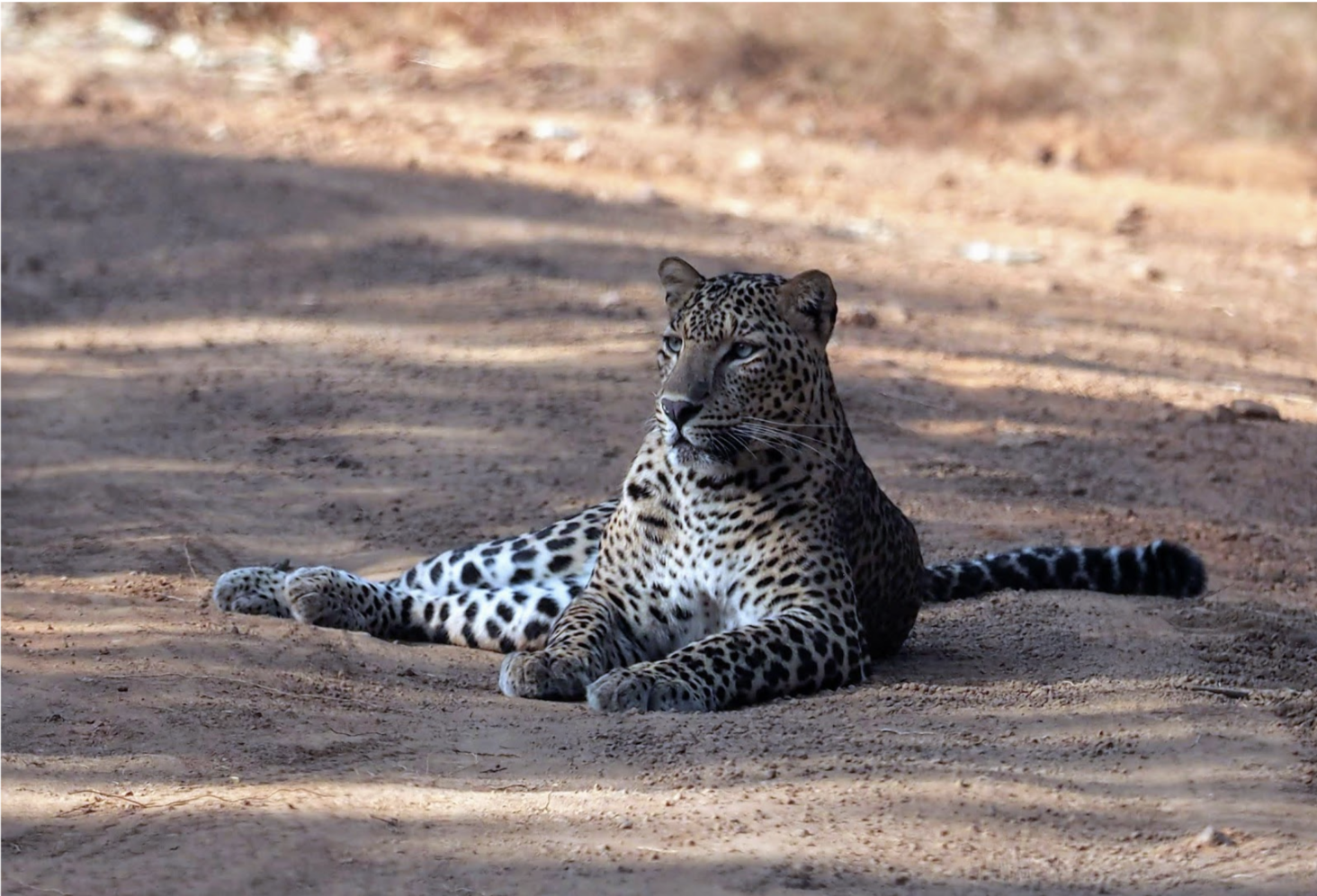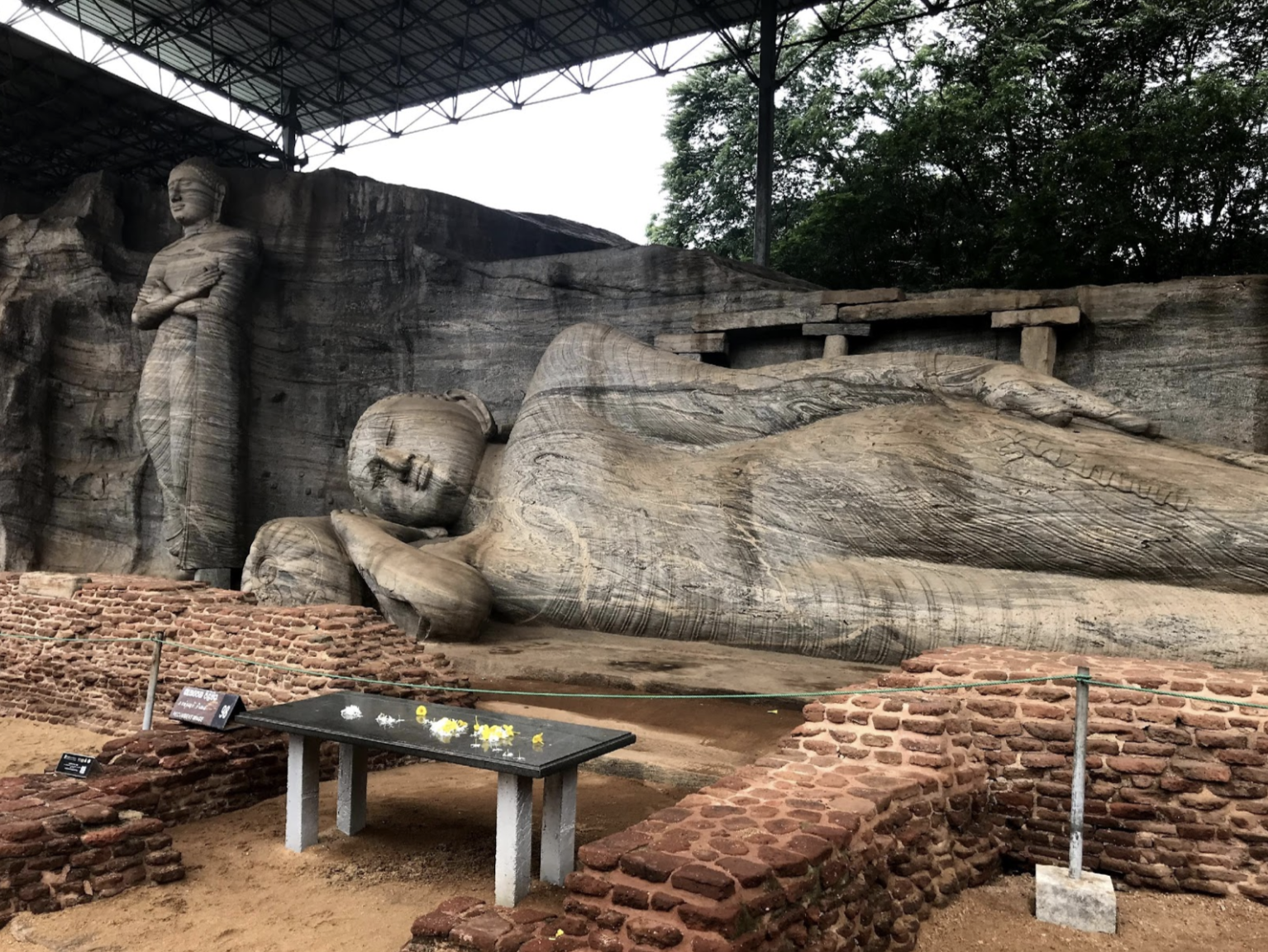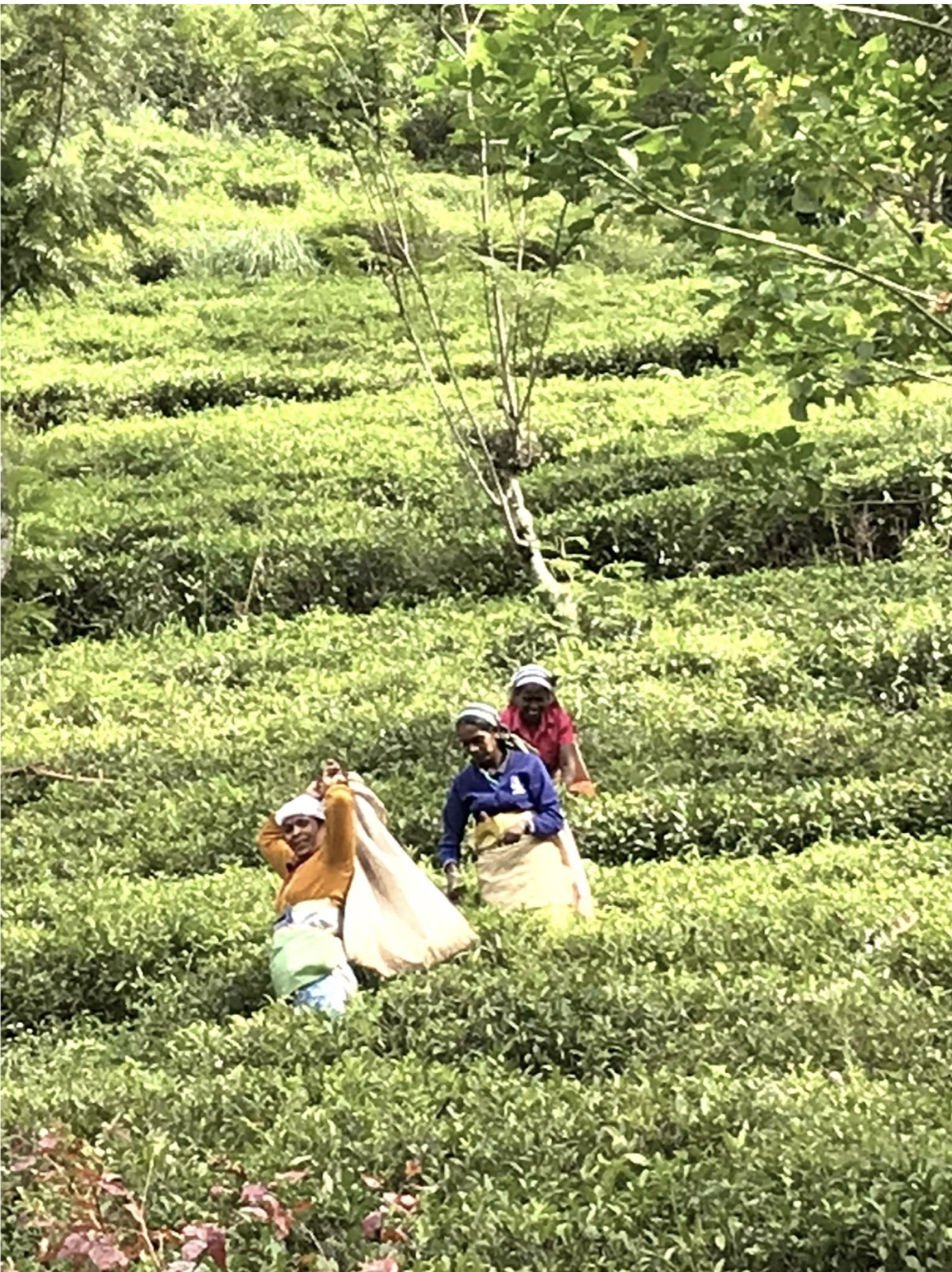Searching for Tigers in India and Learning about Sri Lanka’s History and Culture
“Tigers and History: Exploring India and Sri Lanka,” Ithaca Journal, with photographs by Marcia Jacobson, March 7, 2020, B4; https://ithacajournal-ny.newsmemory.com/?token=7a5e31aa25a7bc18ef00733d8c193a2c&cnum=2588799&fod=1111111STD-0&selDate=20200307&licenseType=paid_subscriber&
All photos by Marcia Jacobson
Knowing our adventure travels were mostly behind us, I asked my wife Marcia Jacobson what she wanted to do that we had not done, and she responded: “Let’s go on a tiger safari in India.” Tigers and leopards are majestic and statuesque cats but because they are loners, they are much more difficult to spot than lions which we have sighted on our four safaris in Africa, especially in the Serengeti in Tanzania. Tiger sightings do not occur regularly, and leopards sightings even far less frequently. For those used to African safaris where elephants, giraffes, cape buffalo, wildebeests, and zebras are plentiful, be aware that great patience is required for tigers and leopards., but when you see them in the wild you will never forget the experience.
To India we added Sri Lanka, a country we had not visited among our travels to over 100 countries, and we included a few days of Safari at Yala where we hoped to see leopards. Usually we plan our own trips, but we knew nothing about tiger safaris --although we had been tourists in India twice before for a total of five weeks—and knew even less about Sri Lanka. We bought a private 24 day package from Dec 4 to 27 from Audley. a British travel company with a Boston office.
This is not the tour for those who want lavish hotels and bellmen to handle their luggage. Indeed, luxury travel to Iceland is often by ships that stop for day tours to the mainland.
India
Before beginning our search for tiger in three national parks, we undertook a 27 hour journey with flights on Qatar airlines from NYC to Doha and Doha to Nagpur and did an overnight at the Radisson in Nagpur. The next day we drove to Tadoba National park in the state of Maharashtra in west central India, where we had four game drives. Here we had three sustained and close tiger sightings, a leopard sighting when a beautiful leopard walked out of the jungle and sat right in front of our vehicle for seven or eight minutes, until another vehicle came along and a splendid sighting of a sloth bear, as well as sightings of wild dogs.
|
|
For our Tadoba game drives, we stayed at the Bamboo Forest and Tiger Lodge. Once we made our preference for Indian food known after one mediocre lunch, the meals were excellent. The lodge has 23 housing units, a welcoming staff, and we had a terrific naturalist—the person who goes on the game drives and takes the lead in finding animals-- but we were the only guests for our two-night stay.
Following a four and half hour drive, we looked for tigers at Pench National Park where in five safari drives we had two tiger sightings. We also saw wild dogs immediately after a kill, grey languor and macaque monkeys as well as a python, a jungle cat (a species which has vastly declined in numbers), crocodiles, plus a great many wild boars and jackals.
In the Pench area we stayed at the Taj Baghvan, a rustic but nice lodge which grows its own vegetables. It has 13 separate units, less than half of which were filled. Its major setback is that the private bathrooms require going outside to a separate room. Here because we asked for a dongle, which is a request we learned to make in subsequent stops, we had internet. Again once we made clear our love of Indian food, our meals were quite fine.
After another four hour drive our final tiger safari stop was Kanha National Park where we had three tiger sightings, stayed three nights at the nearby Flame of the Forest which has four cabins, but we were the only guests. It is a rustic place with a hospitable host where guest and staff eat together. However, the food was at times less exciting than the prior two camps. One night the owner had a camp fire for us and his staff. The best part was a surprise romantic dinner on the deck of our cabin. More importantly, the owner arranged for us to visit a local market and a nearby village.
|
While December is a comfortable time to travel, it is more difficult to find tigers in winter than in the hot season in April. At times we drove and drove and saw no signs of tigers.. After a fast start on our first six drives, we had no sightings for five drives in a row at Pench and Kanya, but on our second to last trip at Kanya we had three separate sightings of tigers.
Know that this is not the trip for those who prefer luxury cruises to adventure travel. The drives between the three parks are often over very rough roads and the park roads are even rougher. If you do two game drives a day as we did several days, you will have little time for anything else. You need to be in bed by nine if you wish to get a full night sleep because the safari vehicles leave about six a.m. and that meant for us awakening at five. By the time you return from the morning drive and have lunch and perhaps take a shower, it is time to go for the afternoon drive.
Sri Lanka
Our next destination was Sir Lanka where we spent 12 fascinating days and explored, aided by our driver-guide, a good deal of the country despite torrential rains. Because Sri Lanka has world class UNESCO sites, friendly people, beautiful scenery, and excellent beaches, it is fine tourist destination, although distant for those living in North America. Sri Lanka has suffered a considerable downturn in tourism due to the April 2019 Easter Sunday bombings by Islamist terrorists at three high end hotels in the capital city Columbo and three Christian churches; more than 250 people were killed. Prospective travelers do need to be aware that the tourist industry is often not up to international standards; many of the so-called boutique hotels are overpriced and some are little more than guest houses.
Changing its name to Sri Lanka after hundreds of years as Ceylon, the country achieved independence in 1972 after 24 years as a British Dominion and before that from1815 to 1948 a British colony. The British had chased out the Dutch who had not only replaced the Portuguese but conquered the island except for Kandy. Sri Lanka is still recovering from a civil war between the Tamil—a mostly Hindu minority (with some Moslems and Christians as well as followers of Dravidian folk religions) who migrated from southern India--and the mostly Sinhalese and Buddhist government that lasted from 1983 to 2009. Sri Lanka also lost 50,000 people on the Dec 26, 2004 Indian ocean typhoon. On Dec 26, 2019 visited the shore memorial for that disaster and witnessed a Buddhist memorial event adjacent to that the memorial site.Our first stop was Sigiriya which was our base for exploring the cultural triangle which includes world class sites of an important culture that lasted from the first century AD until the conquest by the Dutch and which included wonderful Buddhist sites. We visited Polonnaruwa, the Chola dynasty’s ancient capital of established in the tenth century after the Chola’s invasion of the country's then capital, Anuradhapura. Polonnaruwa is a World Heritage site which includes a large brick stupa and a series of four impressive Buddhas, including a huge reclining Buddha--carved into an outcrop of solid stone.
|
|
|
Our next stop was Kandy in what is called hill country. Another major site and one much busier than the others is the sacred Temple of the Tooth in Kandy because that site, supposedly holding a tooth of the Buddha, has spiritual meaning for contemporary Buddhists. Because torrential rain continued, our city tour and a visit to the Peradeniya botanical gardens were truncated. We also watched what Audley called a “traditional cultural show” which, while containing versions of Ceylon folk dances, drew heavily on generic break dancing and fire eating.
In Kandy, we stayed at King’s Pavilion a well-run small hotel with beautiful grounds which we barely saw due to the rain. There we had a nice dinner of Sri Lanka food and an even better one of fish and curry dishes at a local restaurant recommended by our guide called the Honey Pot; indeed it was one of our best meals in Sri Lanka and with service charge plus a small tip cost $12 for the two us.
Note that the local economy is far different from the tourist economy, and restaurants catering to locals can be wonderful and inexpensive. Hoppers are rice flour and coconut crepes which can be filled with various dishes from curry to poached eggs. Prawns from the surrounding waters are often quite delicious, especially in curries.
Next took a train to Nuwara Eliya, the purpose of which was to see the scenic countryside and to take us to the tea-growing area. Here we visited a village, a local school and a tea-making plant. We learned is that Ceylon has 500,000 tea pickers—virtually all women--who take tea off the leaves by hand and earn less than $5 a day on days when they work.
|
In the tea region, we stayed at Stafford Bungalow, an estate home turned into a bed and breakfast. On our arrival this establishment was barely open. We were the only occupants of the four rooms for rent. The only people there were a recently hired young man who identified himself as the assistant butler and an assistant chef. When we threatened to leave, a front desk manager who lived elsewhere turned up, but I had a suspicion he was working elsewhere. By the second night a newly hired chief butler arrived, and he arranged a nice dinner for us.
From tea country we drove to Yala, where because of the heavy rain our original hotel was closed and we were shifted to Chena Huts owned by Uga Escapes. Here we had a nice accommodation with quite good Sri Lanka n food, a plunge pool. While the sun was finally shining, ten per cent of Yala National Park was open and our four leopard drives yielded no sightings, although we did see a few elephants and a few majestic eagles While a few people were luckier, the jeeps could barely get around because the roads had been flooded out and further damaged by safari jeeps.
|
Audley
Audley’s Niall Causer gave us fine personal service while planning the trip, although he was perhaps disingenuous in describing both some of the properties at which we stayed in Sri Lanka as well as Sri Lanka weather. Nor did het organize in India our ground or air transportation as well as we would have hoped. Audley did its best when we had a major travelling glitch trying to get from India to Sri Lanka due to visibility issues at the Jabalpur regional airport. But we should never had been sent to that airport when we were almost as close to Nagpur where we were driven for six hours from Jabalpur after waiting for eight hours in the Jabalpur airport.While our India hotels were fine, and the Delhi JW Marriott which I booked was terrific, Audley did not put us in the best hotels in Sri Lanka given how much we paid and how much I know they paid the hotels. Nor did they offer a rebate when their costs dropped due to the decline in the value of Si Lankan currency after the Easter 2019 bombings. On the plus side they did give us a $2000 rebate when I insisted, and I probably should have asked for more.
Finally I cannot in good conscience recommend Audley for Sri Lanka. Audley should have been aware of the post-bombings conditions and occupancy of the hotels. Had I worked directly with the hotels, my lodging costs would have been about forty per cent less, although I am not sure I could have found a better or more helpful driver-guide, even if his English could have been better.
For India, Audley did better, especially on the safari experience, but they provided unattractive low-end autos with old sheets to cover upholstery holes and they did not provide us--as some purveyors did--with English speaking drivers. We muddled through the food-natured first driver on the two legs from the Nagpur Radisson to Pench, but the second driver was impossible to deal with two legs that took a total of nine hours. Not being able to communicate with the drivers or or the local Jabalpur agent took some fun out of our travel experience.
Conclusion:
This exciting and arduous trip had some disappointments in the form of our three day misadventure getting from India to Sri Lanka and our being in Sri Lanka during what locals called a monsoon. Finding that some of our hotels were not up to standard and in a few cases barely functioning was dismaying. But the memories of animal sightings in India and world class sites in Sri Lanka as well as the service of our Sri Lanka driver-guide and splendid meals will linger and take their place with our best travel memories.Daniel R. Schwarz is Frederic J. Whiton Professor of English and Stephen H. Weiss Presidential Fellow at Cornell University, can be reached at drs6@cornell.edu. He has recent books include How to Succeed in College and Beyond and Endtimes? Crises and Turmoil at the New York Times, 1999-2009. He has been writing travel articles for more than 18 years and has visited more than 100 countries.


 Female tiger (all photos by Marcia Jacobson)
Female tiger (all photos by Marcia Jacobson) Rare sighting of a leapord
Rare sighting of a leapord Village market near Kanha National Park
Village market near Kanha National Park Reclining Buddha at Polonnaruwa
Reclining Buddha at Polonnaruwa Dambulla caves: huge sculptures of reclining Buddha carved out of rocks.
Dambulla caves: huge sculptures of reclining Buddha carved out of rocks.  Elephant reserve in Sigiriya area.
Elephant reserve in Sigiriya area.  Tea-pickers at work.
Tea-pickers at work.  Yala National Park after torrential rain.
Yala National Park after torrential rain.